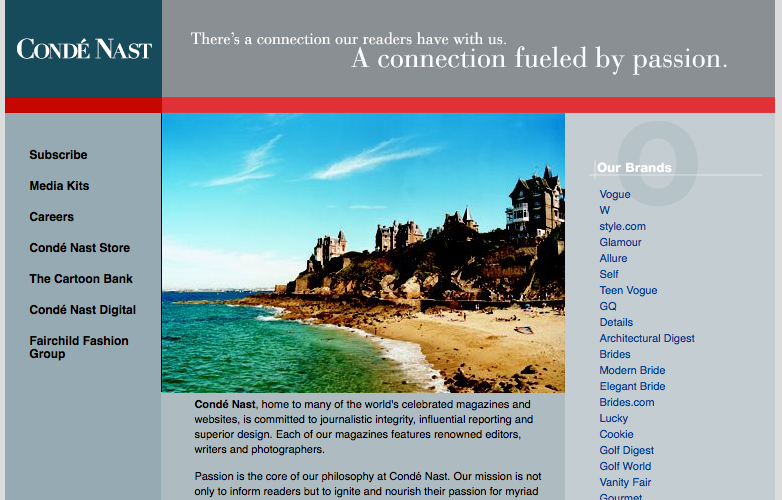For many, Clay Shirky’s doomsday scenario is already here
Notice: Only variables should be assigned by reference in /home3/elprofem/public_html/wjorg/blog/wp-content/themes/wj-theme/functions.php on line 526
Notice: Only variables should be assigned by reference in /home3/elprofem/public_html/wjorg/blog/wp-content/themes/wj-theme/functions.php on line 526
7 comments
NOTE: This piece is also running on OJR: The Online Journalism Review: “For many, the local newspaper isn’t dying – it’s already dead“
The dooms day scenario has been on everyone’s mind, including some at SXSWi, since the revenue/circulation has dropped through the floor and the brilliant mind of Clay Shirky articulated “thinking the unthinkable.”
The scenario, in short, is what will happen to a city when the last major newspaper dies?
Who covers our city? Who becomes our watchdog? What happens to our community? Who tells our story?
I would propose that this scenario, in many aspects, has already happened.
NOTE: I’m not saying this to offend or be rude or for shock value or to make anyone feel guilty… I just felt that someone should state what seems obvious.
Okay, here goes: If you are white, and probably a male, you may not have noticed that we’ve been living in this doomsday scenario for years, if not decades.
For African Americans, Native Americans, Asian, Latino… or gays… or under 25… or female… they know that their communities have been, and continue to be, routinely left out of their newspaper. They typically make the news for holidays, crime or food.
For many of them, newspapers aren’t dying… they’re already dead.
At SXSWi, attendees of the Online News of Tomorrow session couldn’t help but notice that all the panelists were white males.
Look, here’s the reality. If your news gathering staff does not reflect the diversity of your community, then you made it nearly impossible for them to accurately cover that community. That’s the thinking behind NAHJ’s Parity Project.
Let me give you an example:
I worked at a small newspaper in a agricultural town that was predominately Mexican. I believe something like 80 percent. The staff was 95 percent white at the time… they knew the diversity of their community and did everything in their power to try to report/reflect it in their pages… this included hiring translators.
When I joined the staff for the summer, my “ability” to speak Spanish easily open doors that they often could not. And, to be less than modest, I think my stories beat the snot out of the competition by the simple fact I could relate to the community and do better reporting.
So, if the community doesn’t routinely see itself in the paper, why would they bother to read it, let alone buy it? For that community, again, newspapers aren’t dying… they’re already dead.
Think about this:
Let’s say the great Seattle paper and my former home, The Seattle Times, decides to reach out to the large Latino community. Many people know that diversity is highly valued at The Times.
Let’s say that for one day, to reach out to the Latino community, The Times publishes an all Spanish-language edition. Hell, let’s say five days.
In addition to pissing off its readers and getting a ton of canceled subscriptions, the experiment would be a total failure. Why? The Latino community would never know The Times was publishing in Spanish. The community already knows they haven’t been in the paper’s pages before the five days, and probably won’t be there after the five days.
To the Latino community, the largest city paper isn’t dying… it’s already dead to them.
So what does that mean? What has happened in this scary scenario?
The last time I visited a local taqueria in Seattle, I found about four Spanish-language newspapers chock full of ads. That’s not including the one mailed to me in a plastic sleeve.
The community didn’t wait for the newspaper to tell their stories or cover their struggles, they did it themselves. Throw in the Web, and you’ll see more coverage pop up.
Think about this:
The industry recently applauded Mission Loc@l, the hyper-local project by UC Berkeley, the Ford Foundation and other donors. In their mission statement they say they “believes that by covering a neighborhood fairly and thoroughly, we can build community and a sustainable model for quality journalism.”
Without a doubt, this is a innovative project and certainly worth supporting. But before we praise them for swooping in and covering this “ignored” community, let’s put it in some context.
For some 40 years, the Latino community in the Mission District has had its stories told, not by the San Francisco Chronicle, but by El Tecolote. The ethnic paper was there before the gentrification of the Mission and hopefully they survive to continue to tell their community’s stories. It’s even possible that they survive the Chronicle.
For many in our diverse community, the newspapers aren’t dying… they’re already dead. And while one can argue whether or not they are missed, it’s undeniable that the community has adapted on its own.
Thoughts?

